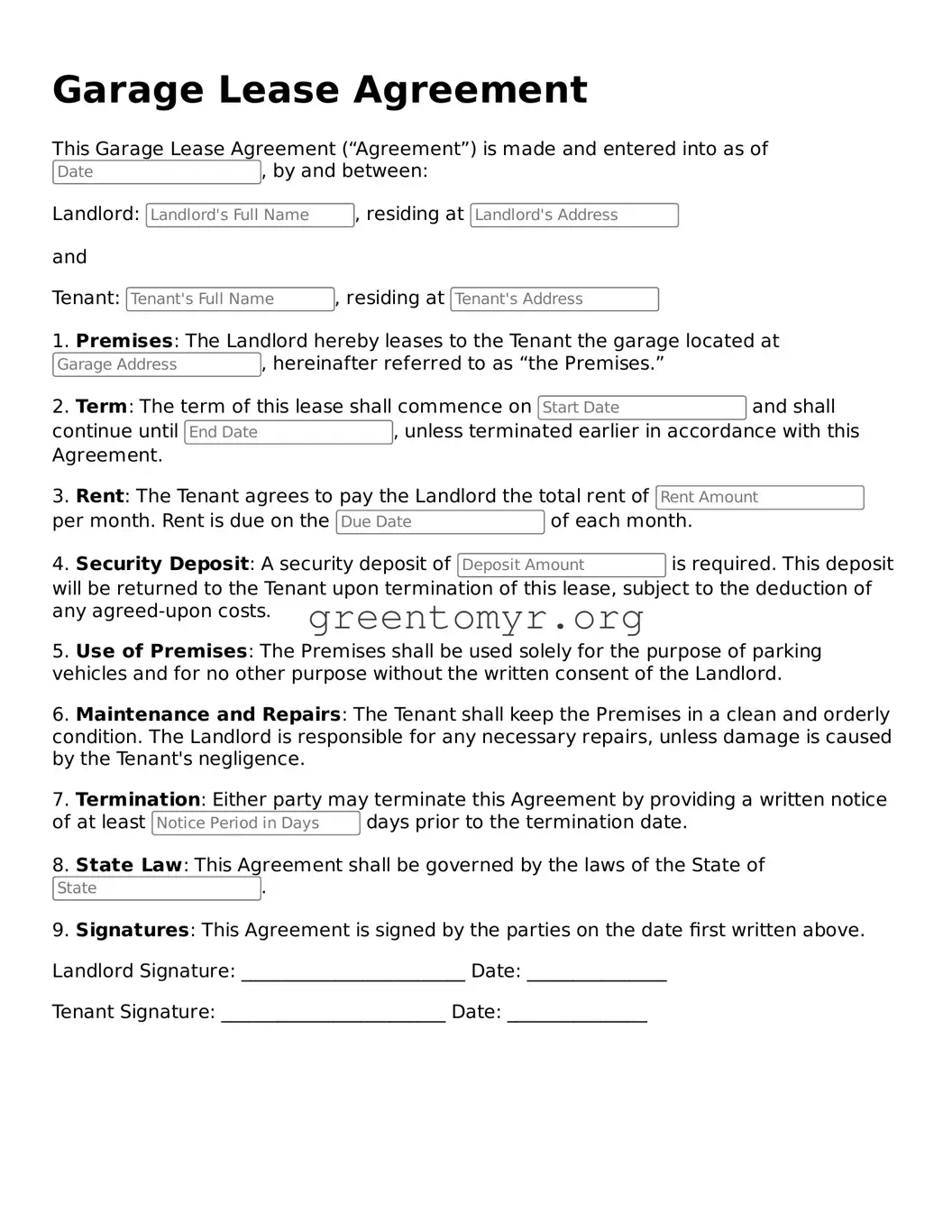Valid Garage Lease Agreement Form
A Garage Lease Agreement is a legally binding document that outlines the terms under which one party rents a garage space from another. This agreement protects the interests of both the landlord and the tenant, ensuring clarity on responsibilities, payment, and maintenance. If you need to secure a garage space, consider filling out the appropriate form by clicking the button below.
